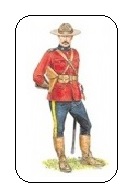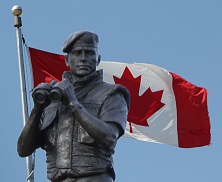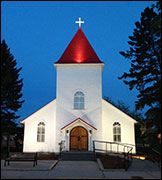True and Fascinating Canadian History
The Mystery of The Mounties
And A Mountain Of Math
by J. J. Healy
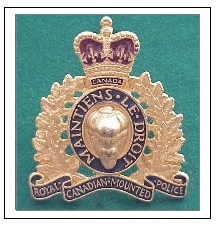
Math can be difficult and not easily understood by the new learner. Its preciseness leaves little room for guesswork. Teachers provide as many examples as possible to make math concepts simpler for students, but teachers also realize that math acquisition does not come intuitively or automatically especially to children. To conquer the subject, experts insist that math requires a lifetime of patience and persistence.
But, the importance of math to everyone in everyday life cannot be diminished. To read the temperature gauge requires math interpretations and, to be successful, the chef requires basic math for a recipe. The engineering profession is built on accurate math calculations and science subjects such as; calculus, physics and astronomy require a solid foundation in math.

In Canada, the time keeper is required to keep a sharp eye on the arena clock and the number of goals scored remains a vital statistic for high profile hockey players. Jazz pianists must be capable of counting to thirteen, but that's for another math day. In short, one can conclude that it would be nigh impossible to get through a day without a basic understanding of math.
But, one of the earliest challenges to face the North West Mounted Police (NWMP) was math. In 'The Mystery of Mounties and a Mountain of Math' it will become apparent that the early days of the NWMP were fraught with math mixups and miscalculations. Yet, in spite of mistakes, the Regimental Numbering system has well survived within the RCMP even to the present day.
In the early days of the NWMP, a sequential number system or Regimental Numbers (Reg.#) to identify its police officers was employed. And today, after one hundred and forty one years, the same sequential Regimental Numbering is in use within the RCMP. However, between 1873 to about 1878, several errors or omissions had been made in the numbering system and corrections could not be made easily. The upshot of all this confusion over numbers means that every member in the RCMP carries a flawed badge. More or less.
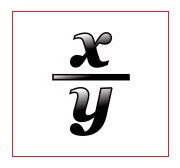
Today, one might suppose that every member of the Force could claim that he or she was somehow a victim of mixed up numbers. And, it is highly likely that the Commissioner is not about to go back and renumber everyone beginning in 1873 with Sam Steele. In simple terms, it is far more wise to just accept that the Reg.# on your gold badge is not actually or truly your real number.
The whole matter can be viewed with a light heart by the RCMP who are known to have a good sense of humour. At the same time, the Regimental Number mix up might have left us with an important lesson.
The following story about Regimental Numbers is meant to be instructional. Several examples will be listed and some explanation will be given to each of the odd Regimenal Numbers. One can also rely on the expertise of British Columbia Historians Jack White and Don Klancher to shed further light on the Regimental Number system. In the end, the reader will learn that 'The Mystery of the Canadian Mounties and Their Mountain of Math' can easily be understood. It was no one's fault but rather a symptom of the era.
To fully understand how mistakes were made with the early Regimental Number system, one should appreciate the following considerations; first, in 1873, it was difficult in Ottawa to maintain a single master list of new NWMP. Recruiting for the NWMP was approached at different locations in Canada and communications among the recruiting stations was difficult. Some numbers in a chronological systematic way were innocently omitted and other numbers were duplicated.
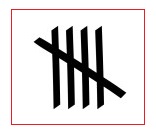
Secondly, mistakes were recognized shortly after 1873 so a new Regimental Number system was introduced in 1878. But, confusion then existed over legitimate recruits who had been hired and other recuits who, for instance, did not show up for employment when they had been expected to do so. In other words, as time progressed an accurate accounting of all recruits continued to be difficult and this confusion at various recruiting centers resulted in some understandable mistakes.
Another issue for consideration was in respect to the new NWMP Officer Corps. In 1873, there was only a handful of newly hired Officers and everyone knew their identity. A numbering system was not thought to be necessary for the Officers. However, as the years passed, more and more Officers were engaged. Meanwhile, a few Officers left the NWMP for new opportunities and new Officers were hired. When a formal numbering system for Officers was begun, some Officers names were skipped and a few names were overlooked. These incidents within the Officer Corps also lead to a few mistakes.
Within the Constable and NCO ranks

Sub Constable S. Bowmaine was hired on January 15, 1874 but apparently he was never issued a Reg.#. About the same time, Sub Constable F. O'Neil was hired as a Trumpeter but he was not allocated a Reg.#.
Constable Frederick Milton Lyon Tetu joined the NWMP as one of the 'Originals'. He was given Reg.#o48. Shortly afterwards, he was assigned to the March West and his number was reassigned to Reg.#o239. Eventually, he received his new number which was Reg.#261.
Constable William George Mowat joined as Reg.#o482 then later he was assigned Reg.#95. At one point, Mowat was 'Dismissed', but later he was allowed to reengage as Reg.#1627.
Staff Sergeant Sandy Warren originally joined in 1876 as Reg.#o516. In 1878, he was assigned a new Reg.#286. He quit then reengaged as Reg.#507.
Constable Samuel Jay Hall joined as Reg.#137 then left and reengaged years later as Reg.#819
Corporal M. Williams joined at 'Depot' in 1876 as Reg.#110. He quit for a few year then reengaged as Reg.#997
Constable Charles Percy Shepherd joined the Force in 1876 as Reg.#104. He quit for a few years and then returned as Reg.#950.
Constable Alfred B. Simons originally joined as Reg.#153. He left the Force and retured later as Reg.#1670.
Two members hold the same Reg.#. Reg.#7427 was originally issued to E. C. Caswell but Caswell quit after his official engagement. His Reg.# was then given to H. W. Jewell.
All in all, there were a few mistakes around 1873 in the Regimental Numbers system of the NWMP. The confusion of 1873 tends to explain the difficulty which researchers sometimes have today with identifying with certainty some of the early NWMP members, especially say those between Regimental Number 1 and Regimental Number 500.
Within the Officer Corps
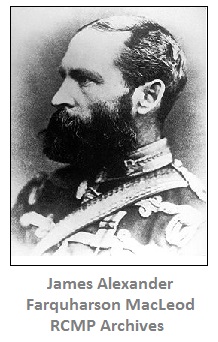
Confusion overtook the numbering of members within the Officer Corps as well. An 'ole friend, BC Vet Don Klancher explained the unique circumstances of Officer Numbers which began sometime in the early 1900's. In the Officer Corps, it was decided that the numbering of Officers was to include serving Officers as well as all the Officers who had retired or left the Force.
Don Klancher's explanation continued, 'The numbering system was, for those Officers who joined with a Commission, based upon the date of the member’s appointment to the Force or, for those men promoted from the ranks, the date of his promotion to the Commissioned ranks.
However, that criterion was not followed in a number of cases. One example was Commissioner G. A. French; he was allotted number O.1 when in fact, he was the eleventh Officer appointed to the NWMP.
When the Officer Numbers were allotted, four former Officers were overlooked. When the errors were discovered, the numbering system was modified. Interestingly, numbers were allotted to only three of the four Officers - Commissioner {Temporary} W. O. Smith, {who should have been O.1}, was assigned O.2 1/2; Quartermaster C. Nicolle was assigned O.23 1/2 and Inspector M. H. White-Fraser was assigned O.50 A.
Forgotten, however, was Inspector J. Emile Demers, a former Lieutenant in the 17th Battalion, Canadian Militia. He was, by Order-in-Council of September 18, 1885, appointed an Inspector, effective September 15, 1885. However, subsequent to his appointment, he was found physically unfit for the "arduous duties required of the Mounted Police." As a result, a further Order-in-Council was passed on October 23, 1885, which recommended Demers' appointment be cancelled - which it was.
Had Emile Demers been allotted a number, it undoubtedly would have been O.65 1/2 as the Order-in-Council showed his name between Inspector C.F.A. Huot and Inspector J.D. Moodie, who were later allotted numbers O.65 and O.66 respectively.'
Don Klancher's explanation of the Officer's Numbering system is valuable for its historical merit. At the same time, one has to wonder how it was possible for some Officers to be overlooked especially when there were so few.
In 1873, Superintendent Walsh was one of the first Officers appointed to the Force. He was allotted Officer Number O.7 but, in 1883, Walsh resigned his Commission. Fourteen years later, he re-engaged. He was re-instated as a Superintendent but he was issued a second Officer Number O.109.
Inspector George Stevens joined the Force in 1885 as Officer #O.134. He was assigned Reg.#1186A which was squeezed in
between Reg.#1186 and Reg.#1187.
Officer Number O.174 was allocated to two Officers; Inspector William C. Proby and Inspector Isaie Savard.
Within the study of history, some events can be viewed in a light hearted spirit. A few math mistakes were made in the early days of the NWMP but no one's life was harmed.
In the 1873 to 1878 period, communications were not the same as today so administrative mistakes were bound to occur. Across Canada, the early days of the Force were marked by the dedication, good will and bravery by hundreds of NWMP Constables, NCO's and Officers. The Regimental Numbering system did not press nor occupy their minds.
The Mystery of Regimental Numbers may hold a lesson for all police officers. First, mistakes are made in all organizations whether they be the small family unit, or the Canadian Hockey League or the RCMP. Solid people do not dwell on mistakes. It is important that one takes a lesson from them and try not to repeat them.
If one makes a major mistake in life, it is wise to acknowledge it and then apologize sincerely to whoever is hurt. In the community, an apology for a mistake always demonstrates goodwill on the part of police officers.
In life with any mistake, it is always a question of perspective.
Reporting from the Fort,
J. J. Healy
January 8, 2014
